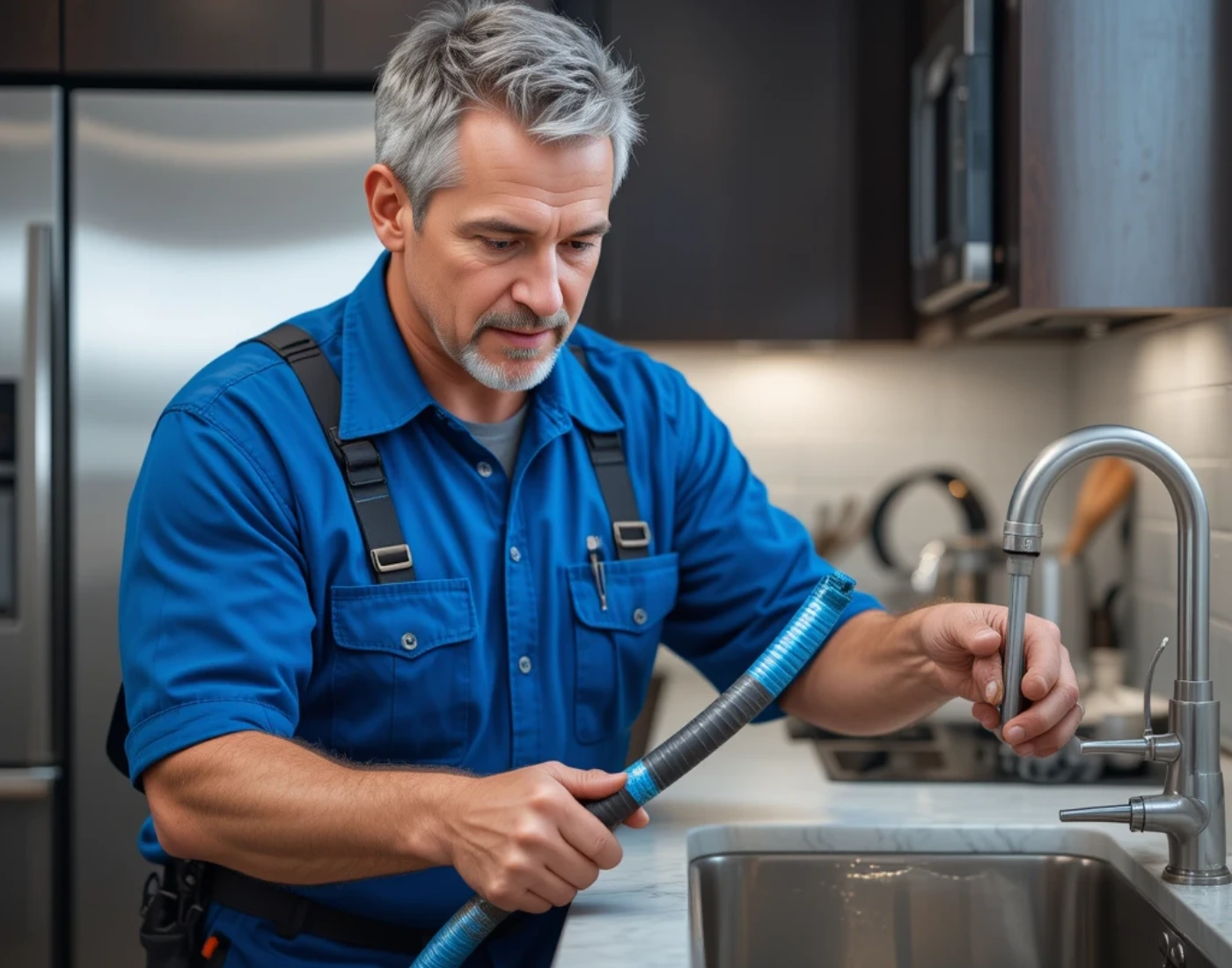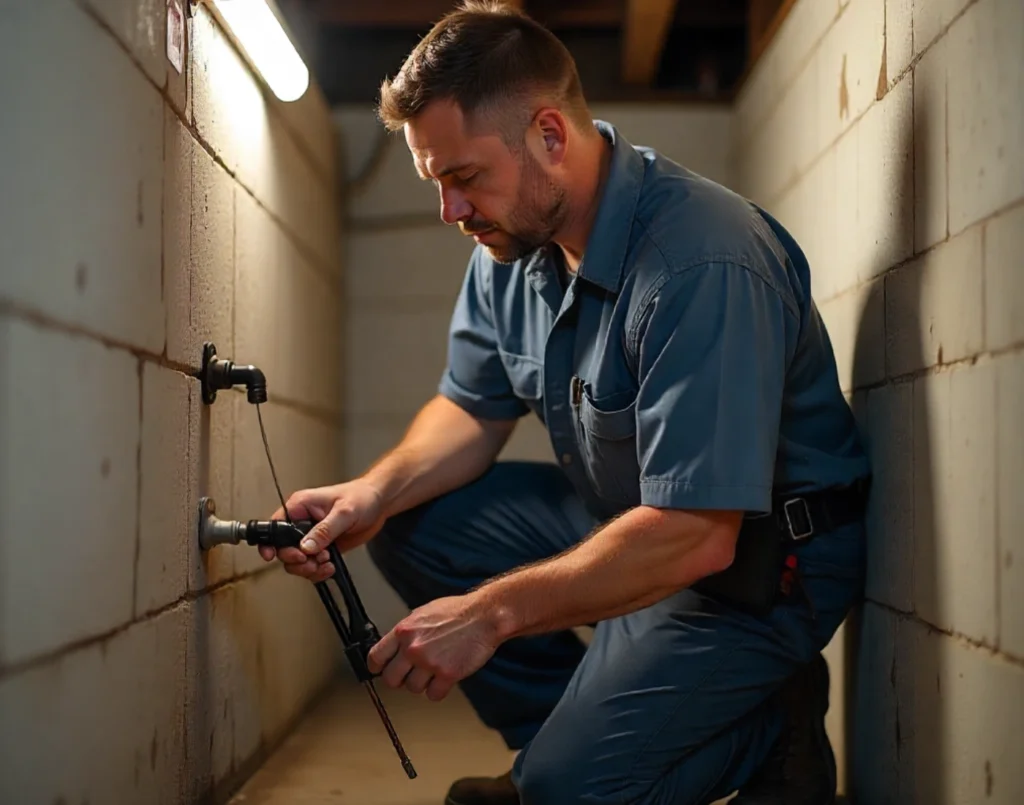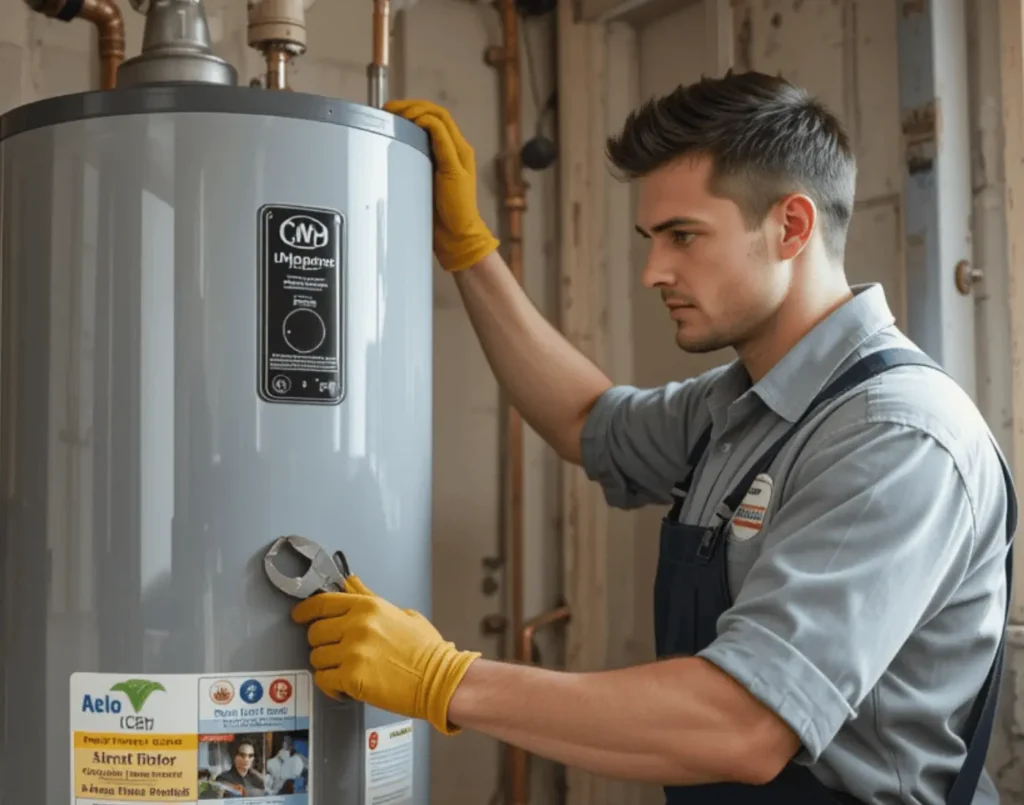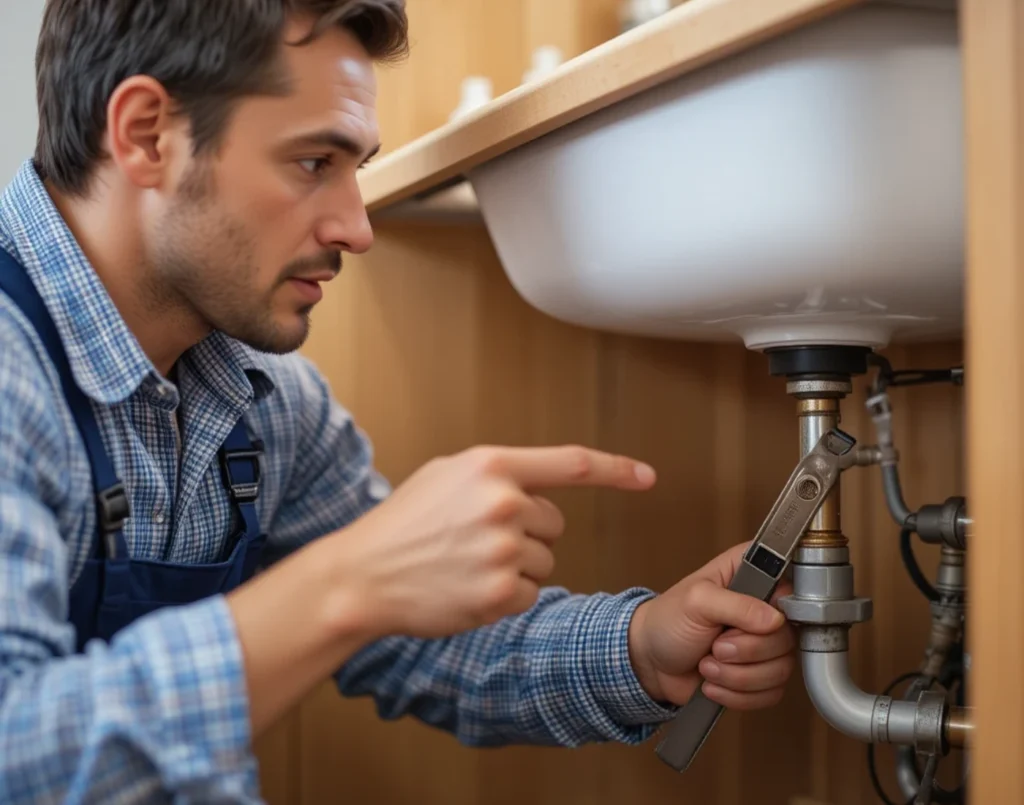A clogged drain can ruin your day. It makes tasks like washing dishes or showering frustrating. If your kitchen sink drains slowly or your shower backs up, don’t worry. Many clogs can be fixed fast without a plumber. You can fix most drain problems yourself. Just know what causes clogs, how to spot their severity, and use the right methods.
A clogged drain can cause frustration, but many blockages can be easily fixed without calling a plumber. Learn how to identify common causes like grease, hair, and soap scum, and discover DIY solutions such as boiling water, vinegar and baking soda, and using a plunger or drain snake. For tougher clogs, consider using a wet-dry vacuum. Prevent future issues with regular maintenance and habits like using drain strainers and disposing of waste properly.
Understand the main causes of drain clogs
Grease and food particles frequently clog kitchen drains
Kitchen sinks handle cooking oils, food scraps, and dish soap daily. Grease builds up in pipes over time. It forms stiff barriers when it combines with food particles. Coffee grounds and starchy foods, like pasta, can cause clogs if they get past your strainer.
Hair and soap scum are the main causes of clogged bathroom drains
- Hair and soap scum are the two main causes of clogged bathroom drains.
- The most common reasons for clogged bathroom drains are hair and soap scum.
- It tangles into clumps and combines with soap residue.
Unexpected items and hard water also cause clogs
It’s not just hair and grease. Flushing everyday items can cause big blockages. Products like paper towels, cotton swabs, and hygiene supplies should never be flushed. Children may accidentally drop toys or small objects into drains. In areas with hard water, minerals build up in pipes. This narrows the pipes over time and slows drainage.
How to Assess the Severity of Your Drain Clog
Look for signs of partial versus complete clogs
A partial clog slows draining, but water eventually disappears. Run hot water if it drains sluggishly but moves; you likely have a partial blockage. Simple do-it-yourself solutions make them easier to resolve.
Check multiple drains for signs of sewer line problems
- If your kitchen sink and bathroom shower clog simultaneously, the problem may be in the main sewer line.
- This type of clog is more serious than a localized blockage.
- Main sewer line issues often require professional plumbing assistance.
Listen for strange gurgling or bubbling noises
Air bubbles and gurgling sounds show a blockage deeper in your pipes. These noises occur when a clog traps air, forcing it to escape through your fixtures. Gurgling is a red flag that your clog might be beyond easy DIY fixes.
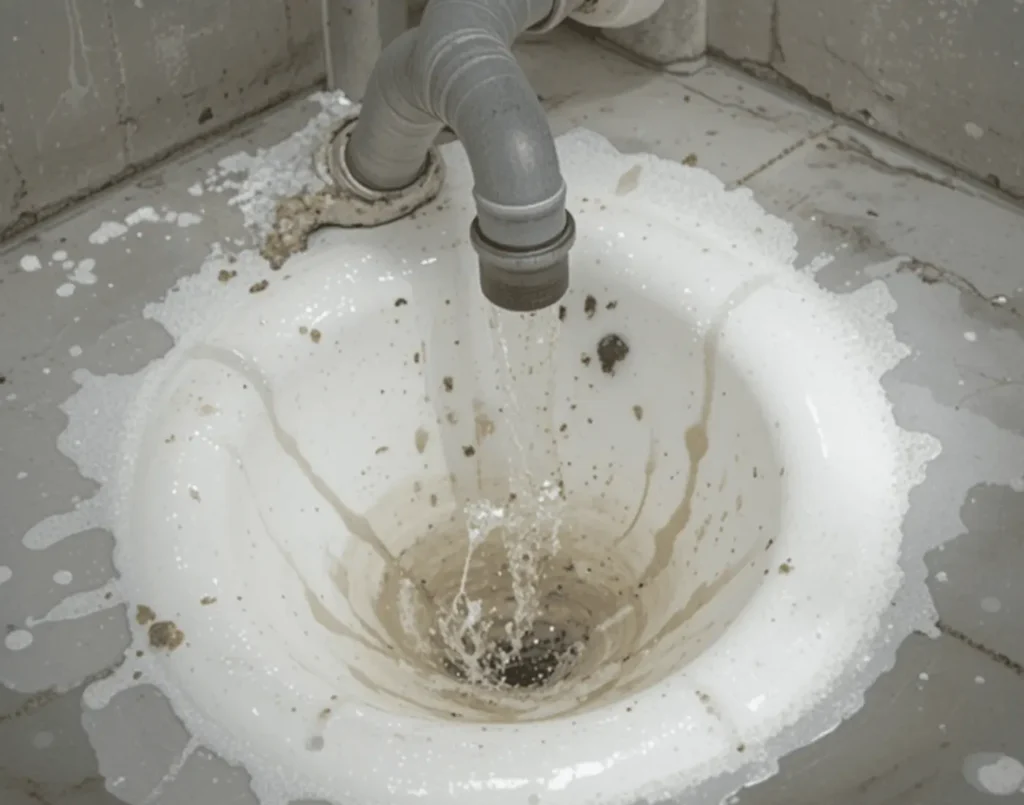
Best DIY Methods to Unclog Simple Drain Clogs
Clear clogs with boiling water, but only in metal pipes
- Boiling water works well for kitchen sinks clogged with grease.
- To allow the grease to melt, pour the water in two or three steps, stopping in between.
- Do not use this method with PVC pipes, as the high heat can cause warping or cracking.
Use the vinegar and baking soda method to clean in an environmentally safe manner
First, add one cup of baking soda and then one cup of white vinegar to the drain. Cover the drain with a stopper to give the fizzy reaction 15 to 30 minutes to work. To remove the loose particles, flush with hot water thereafter.
Unclog sinks using a plunger with strong pressure
Choose a funnel-cup plunger for sinks. Fill the sink with enough water to cover the plunger’s cup. Create a tight seal and plunge 15–20 times using quick, strong motions. If you have a double sink, block the second drain. This helps boost pressure and effectiveness.
Advanced DIY Techniques for Tough and Stubborn Clogs
Remove deep clogs using a plumber’s drain snake:
- A drain snake (plumber’s auger) is perfect for tackling more stubborn clogs.
- Insert the snake into the drain, turning it clockwise as you push deeper.
- Once you feel resistance, continue turning to break the clog apart.
- Slowly pull the snake back out, bringing debris with it.
- Clean the snake afterwards to prevent future odours.
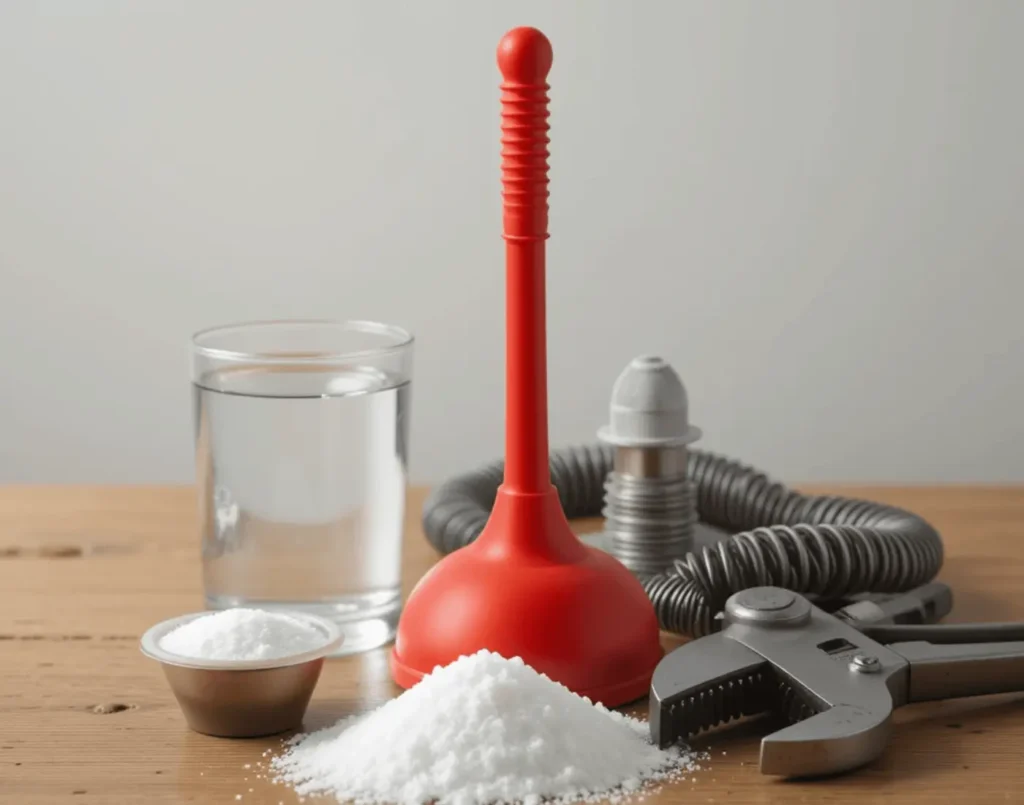
Use a wet-dry vacuum for larger or solid obstructions
A wet-dry vacuum is another powerful DIY tool. Please set it to liquid mode, then seal the hose tightly to the drain opening. Start on low suction, gradually increasing power. This method can eliminate hairballs, small toys, or grease clumps. It works where plungers or snakes fall short.
Risks and Drawbacks of Chemical Drain Cleaners
Understanding the different types of chemical drain cleaners is essential before use. Caustic cleaners create heat to break down grease and soap. However, they can harm PVC pipes over time. Acidic cleaners work quickly and effectively. However, they are very corrosive, which can harm skin and plumbing. Enzymatic cleaners are a safer, eco-friendly choice. They use natural bacteria to break down clogs. However, they work slowly and may need several treatments.
Why chemical cleaners can cause more harm than good
- Chemical drain cleaners can weaken old or fragile pipes, leading to leaks or bursts over time.
- Many contain toxic fumes that are harmful when inhaled.
- These chemicals can damage rubber seals in garbage disposals and plumbing fixtures.
- They can harm septic systems. This happens because they kill helpful bacteria that break down waste.
Effective Preventive Maintenance to Keep Drains Flowing
Regular Cleaning to Prevent Drain Clogs
A simple cleaning routine helps prevent clogs and keeps your drains flowing smoothly. Every week, pour a kettle of hot water down your drains. This helps dissolve soap scum, grease, and early buildup before they harden. Once a month, pour half a cup of baking soda into each drain. Let it sit for 30 minutes. Then, rinse with hot water. This natural method helps break down stubborn residue. Remember your sink strainers! Clean them weekly to catch hair, food scraps, and debris. This stops clogs before they reach your plumbing. These easy steps protect your pipes and reduce the need for costly plumbing fixes.
Adopt habits that avoid introducing foreign objects into drains
Scrape food scraps into the trash or compost bin instead of rinsing them down the sink. Let cooking oils solidify, and dispose of them in the garbage. In the bathroom, install inexpensive hair catchers in the shower and tub drains. Teach everyone in your household to avoid flushing anything other than toilet paper.
Recognize When to Call a professional plumber for Help
Know the signs that need professional intervention.
Call a plumber if you notice:
- Many drains are clogging at once
- Clogs that return after each cleaning.
- Foul odours or sewer smells from drains
- Water backing up into other fixtures, like toilets or tubs
Benefits of professional plumbing services over DIY attempts
Professionals have access to advanced tools like hydro-jetters that clean pipes more thoroughly. They can spot problems like pipe misalignment, tree root intrusions, or hidden corrosion.
- Professionals have access to advanced tools like hydro-jetters that clean pipes more thoroughly.
- They can spot hidden issues like misaligned pipes, tree roots, or corrosion that are not visible.
- Many plumbers also offer service warranties, giving you peace of mind.
More tips to keep your drain system healthy long-term
Start every clog-clearing effort with gentle solutions like hot water or vinegar. These methods are effective for many common blockages and won’t damage your plumbing. Use mechanical tools like plungers or snakes if necessary.
Avoid chemicals when you can:
- Start with gentle solutions like hot water or vinegar for clog clearing. These methods work well for many common blockages and won’t damage your plumbing.
- Use tools like plungers or snakes if gentle methods fail, but try to avoid chemicals.
Focus on Prevention
To prevent plumbing issues, develop simple habits that protect your system over time. Keep sink strainers clean to stop debris from entering your pipes. Always dispose of waste properly. Don’t pour grease, coffee grounds, or food scraps down the drain. Flushing your drains with hot water often helps break down buildup. This stops it from becoming a clog. These small, consistent actions form the foundation of effective preventive maintenance, reducing the risk of major blockages, protecting your plumbing, and saving you from expensive repair bills.
Frequently Asked Questions
1. What is the best way to unclog a clogged drain?
To unclog a drain quickly, start by using a plunger. If that doesn’t work, mix baking soda and vinegar for a natural solution, or use a drain snake for tougher clogs.
2. How to quickly unblock a drain?
If you’re in a hurry, pouring boiling water down the drain can break down grease and soap buildup. Use a plunger or a plumber’s snake to remove debris for more stubborn blockages.
3. Does pouring boiling water down the drain unclog it?
Boiling water can help dissolve grease and soap clogs in kitchen sinks, but it’s unsuitable for PVC pipes as high heat can cause damage.
4. What liquid do plumbers use to unclog drains?
Plumbers often use commercial drain cleaning solutions that contain powerful chemicals or professional-grade equipment like hydro-jetters to clear blockages effectively.
5. Does vinegar and baking soda unclog a drain?
Yes! The fizzy reaction from vinegar and baking soda can break down grease, food particles, and hair, making it a safe and effective option for clearing minor clogs.

